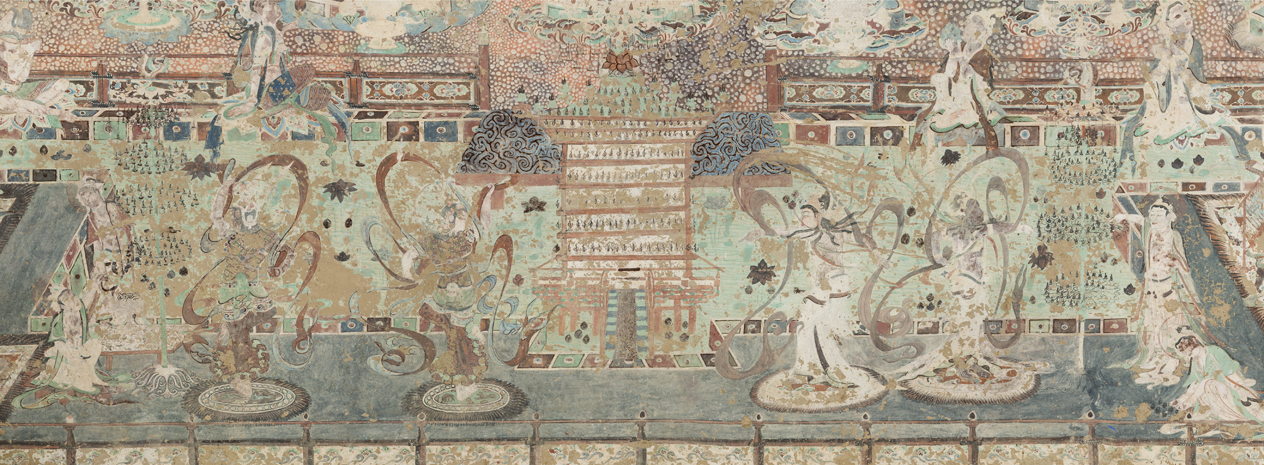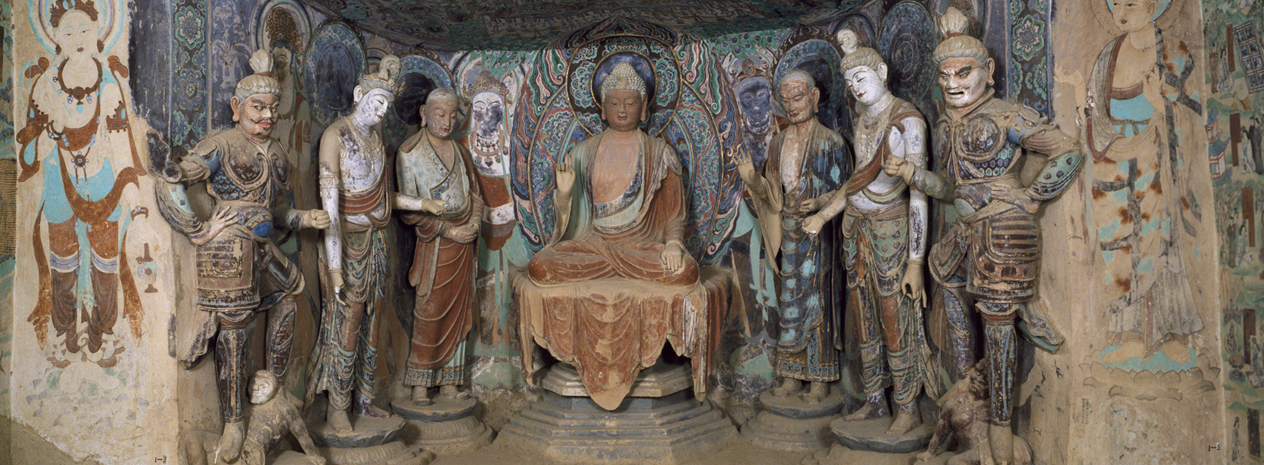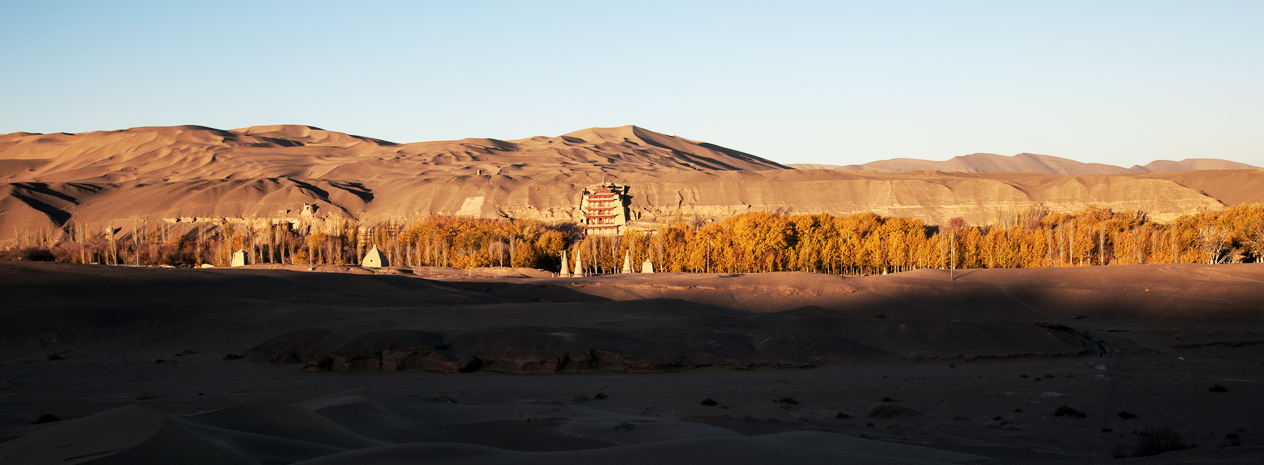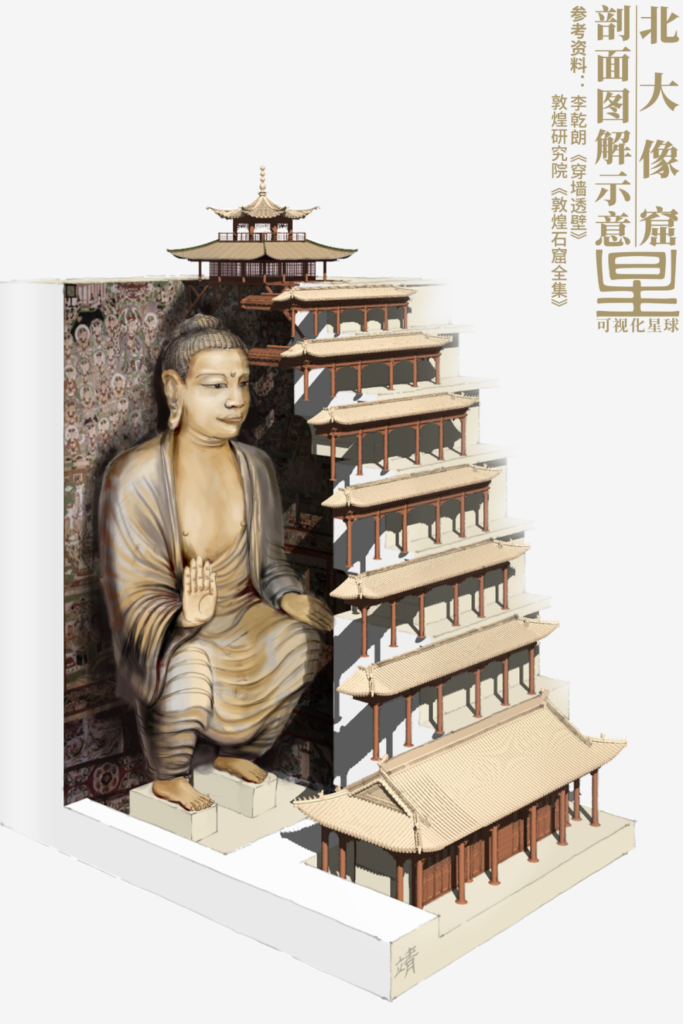𝑴𝒐 𝑲𝒂𝒐 𝑮𝒓𝒐𝒕𝒕𝒐
𝑴𝒐 𝑲𝒂𝒐 𝑮𝒓𝒐𝒕𝒕𝒐
𝑴𝒐 𝑲𝒂𝒐 𝑮𝒓𝒐𝒕𝒕𝒐
𝑴𝒐 𝑲𝒂𝒐 𝑮𝒓𝒐𝒕𝒕𝒐
the 12 Girls Band, visited Dunhuang in 2005,
creating their “Dunhuang” album based on the Silk Road theme
From the Digital heritage and cloud gaming technologies
Copyright For Dunhuang Academy

The Mogao Grottoes is a complex of 492 temples, caves, and grottoes located near the town of Dunhuang in Gansu Province, China. The grottoes were built over a period of nearly 1,000 years, from the 4th to the 14th centuries, and are home to one of the world’s largest and most significant collections of Buddhist art and literature.
The grottoes are a testament to the creativity, ingenuity, and spiritual vision of past generations and continue to inspire artists, scholars, and visitors from around the world.
Efforts have been made to preserve and protect the heritage of the Mogao Grottoes, including the creation of Digital DunHuang.. The center of DunHuang Academy uses advanced digital technology to document and preserve the grottoes, including 3D scanning, digital modeling, augmented reality, virtual reality, immersive game, and other AI mural disease identification tools.
These technologies help to monitor and manage the site’s physical and environmental conditions, as well as to provide visitors with immersive and educational experiences that promote the understanding and appreciation of the site’s cultural and artistic significance.
art
IN
history
Digit
HERITAGE
oVERVIEW

Warning
Threats
Climate
CHANGES &
challenges
“ Climate change is one of the most significant threats to the heritage of the Mogao Grottoes. The site is located in a region that is already experiencing increased temperatures, decreased precipitation, and increased frequency and intensity of extreme weather events. These impacts can have significant implications for the preservation of the grottoes and the artwork they contain. ”
—— DunHuang Academy
One of the most significant climate-related threats to the grottoes is water damage. The site is located in an arid region, and any decrease in precipitation can have significant impacts on the stability of the grottoes and their surrounding landscapes. Increased frequency and intensity of extreme weather events, such as floods and droughts, can also damage the site and its infrastructure, including access roads and visitor facilities. Additionally, increased temperatures and changing weather patterns can exacerbate other threats to the site, including erosion, vegetation encroachment, and soil salinization. These threats can affect the stability of the grottoes and their surrounding landscapes, potentially causing damage to the artwork and undermining the integrity of the site.
Another threat to the heritage of the Mogao Grottoes is the impact of human activities. Increased tourism, infrastructure development, and urbanization can put pressure on the site and its surrounding landscapes, leading to increased erosion, pollution, and habitat loss. In addition, unregulated development and agricultural practices can damage the site and its surrounding ecosystems, potentially leading to irreversible impacts on the site’s cultural, historical, and environmental significance.

Digital Preservations


Digital Restoration of Murals
Common diseases affecting Dunhuang murals include:
- Alkali salt disease: A chemical reaction that occurs when the gypsum layer in the mural combines with lime cells, leading to pigment loss and damage to the gypsum layer. This is one of the most common mural diseases.
- Efflorescence: The phenomenon of powder formation caused by the combination of pigment particles and fine dust in the mural. This can result in pigment loss and the loss of fine details in the image.
- Delamination: Weakening of the bond between the surface layer of the mural (pigment, gypsum layer, or underlying materials) and the rock substrate, causing partial loss of pigments or image layers.
- Staining: Water stains and marks on the surface of the mural caused by water seepage or other sources of moisture. This can lead to pigment fading, blurred images, and surface contamination.
- Fading: Pigments in the mural are affected by factors such as sunlight, oxidation, or chemical reactions, resulting in color fading or loss of vibrancy.
- Pollution: Dust, dirt, mold, or chemical pollutants from the external environment adhere to the surface of the mural, causing pollution and damage.
- Cracks: Small or large cracks on the surface or within the mural image, which may be caused by tectonic movements, temperature changes, or material aging.
Addressing these diseases requires considering the material characteristics, environmental factors, and restoration techniques to ensure the long-term preservation and sustainable protection of the murals.


AI mural disease identification tool
As early as 2000, China Central Television reported that the Mogao Grottoes in Dunhuang were suffering from increasingly severe diseases. For example, Cave 130, built during the prosperous Tang Dynasty, houses a mural titled “Lady Taiyuan, the Consort of the Military Governor, Worships the Buddha.” It is the first life-sized figure of a donor in the entire Mogao Grottoes and holds significant artistic value. However, today it is no longer possible to see its original appearance clearly.
In fact, similar situations are widespread, with many murals showing signs of decay, peeling, and fading. Some have even left behind empty rock walls. When the underlying layers of earth beneath the millennium-old murals turn into powdered form, the pigments on the murals gradually peel off. This condition is referred to as “alkali salt disease,” known as the “cancer” of murals.
In reality, the Mogao Caves are much more than just this nine-story building.
—— DunHuang Academy
The excavation of these caves took over a thousand years to complete.
The excavation and preservation of cultural relics is a race against time.
The “Digital Dunhuang” project is a groundbreaking and far-reaching century-long endeavor.

Digital
DunHuang

How to digitally recreat ?
The Dunhuang Grottoes are a brilliant artistic treasure trove of ancient Chinese civilization and an important testament to the dialogue and exchange between different civilizations that once took place along the ancient Silk Road.
The “Digital Dunhuang” project uses advanced scientific and technological methods and cultural relic preservation concepts to comprehensively digitize, process, and store the Dunhuang Grottoes and related artifacts. By collecting and integrating various types of data such as images, videos, 3D models, and literature, a diverse and intelligent digital resource library of grotto artifacts is built.
These resources are shared globally through the internet and mobile internet, and a digital asset management system and digital resource protection system are established.
They house over 70,000 volumes of documents, 45,000 square meters of murals, and more than 2,000 various colored statues. These vast collections of art are contained within 735 caves carved into a 1,680-meter-long cliff face.

Immersive Cloud Game:
Digital Scripture Cave
The “Digital Scripture Cave” comprehensively utilizes high-definition digital scanning, game engine-based physical rendering and global dynamic lighting, cloud gaming, and other gaming technologies to vividly recreate the historical scene of the scripture cave and its collection of over 60,000 precious cultural relics from a century ago. The digital asset scale exceeds 50GB, and the image quality reaches 4K film-level resolution.
Interactive Map with Image Gallary and Panorama (AR) ↗
There are few existing interactive sectional maps of the Dunhuang Grottoes. Due to the vertical distribution of the caves, it is difficult for people to locate specific caves on a map. This Figma prototype annotates the main caves on a sectional map and links them to relevant databases and AR panoramic experiences.
VR Experience (VR)↗
With the aid of VR technology, the murals of Dunhuang Cave 61 can be presented to audiences in a completely new way, allowing people to personally experience its unique charm and value. Additionally, it provides a convenient and realistic way for those who cannot physically visit Dunhuang to appreciate and explore the cave.
Digital Heritage and Cloud Gaming ↗
Get to know the immersive game, the “Digital Scripture Cave”,and experience the unprecedented combination of cultural heritage and cloud gaming.
3D Models ↗
It showcases some fundamental examples of 3D models as well as the latest application of modern photogrammetry and remote sensing technology in the three-dimensional digital reconstruction of the Dunhuang Mogao Grottoes.
More Digital Exhibition ↗
Stay updated and see our current exhibitions here.
Researches On The Conservation Of Cave Temples And Earthen Sites ↗
Get to know Resources of Achievements at DunHuang Academy

Created by sz78@st-andrews.ac.uk
Proudly powered by WordPress
Leave a Reply